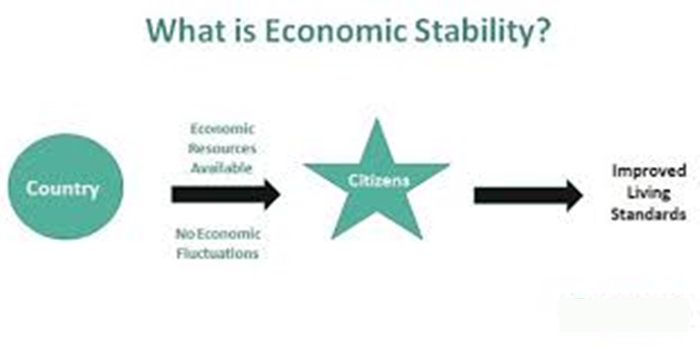In this article, we discussed the meaning of economic stabilization, the purpose, the types, the benefits, the policy, and also the tools.
Definition
Economic stabilization refers to a governmental effort to stabilize the economy. It stems from situations in which the economy is suffering from stress due to inflation, unemployment, or even deflation.
The Purpose of Economic Stabilization
Monetary and fiscal policies
These include managing inflation, developing a national budget, and creating a transparent system of public expenditure
Economic laws and regulations
These govern budgetary processes, central bank operations, international trade, and domestic commerce
Economic institutions
These include unemployment compensation, farm price supports, and family and corporate savings.
Economic stabilization Benefits include:
Reduced economic volatility: Economic stabilization can help smooth out economic swings, such as recessions, inflation, and deflation.
Increased economic growth: A stable economy can grow steadily, which can lead to increased employment and income levels.
Reduced burden on the poor: Macroeconomic instability can hurt the poor, and economic stabilization can help reduce this burden.
Improved social and economic welfare: A stable economy can contribute to social and economic welfare.
Improved consumption: Households prefer to have stable incomes and employment, which can lead to stable consumption.
Improved education and career choices: A stable economy can help improve education and career choices.
Economic stabilization policies include:
Fiscal policy
The government uses its funds to lower taxes or increase spending
The government uses funds from taxes and privatizations
The government makes decisions to ensure public finances are sustainable
Monetary policy
The government adjusts interest rates and the money supply
The government buys or sells government securities to change the money supply’s growth rate
The government influences inflation, employment, and economic health
How these policies work together
Fiscal policy and monetary policy are closely linked
Fiscal policy decisions help ensure that automatic stabilizers can operate effectively
Monetary policy needs to be carefully tuned because small changes can have big effects on the financial system
Economic stability is important for a country to grow steadily and maintain high employment rates.
The tools of economic stabilization include:
Fiscal policy
Government spending: The government can raise or lower spending to influence economic output.
Tax policy: Tax policy can impact the poor, and the government can use tax policy to help soften the effects of a downturn.
Expansionary and contractionary policies: These policies are used to stimulate economic growth or slow economic growth.
Monetary policy
Interest rates: The central bank can change interest rates to influence economic activity. Lower interest rates can stimulate borrowing and spending.
Money supply: The central bank can adjust the money supply to stabilize the economy.
Conclusion
Economic stabilization is a government’s effort to manage economic fluctuations and promote steady growth. The goal is to create a stable economy with consistent growth, low unemployment, and adequate income.


